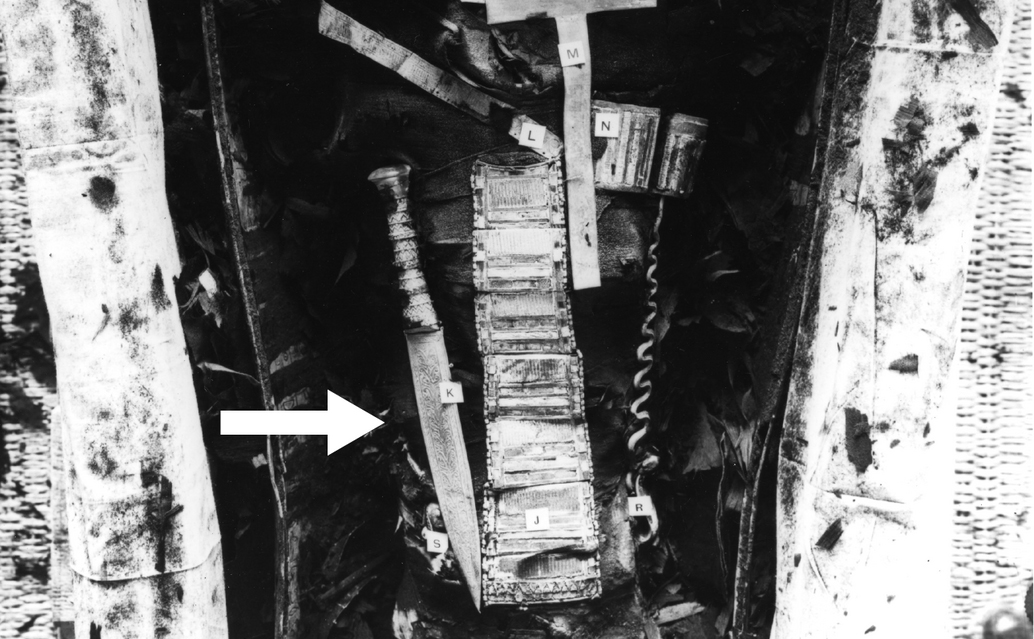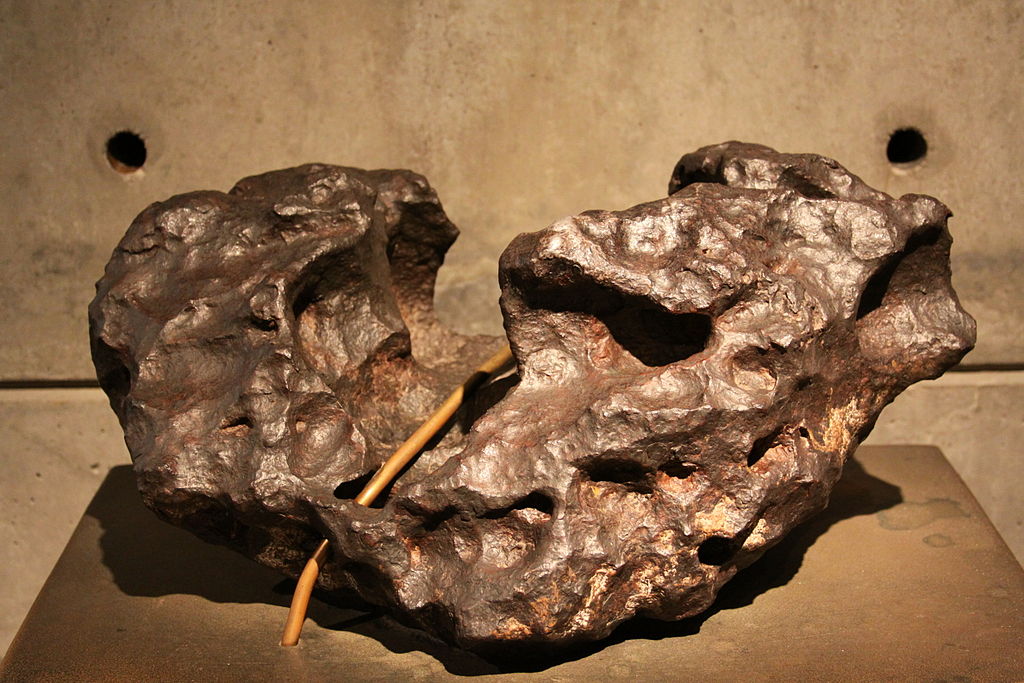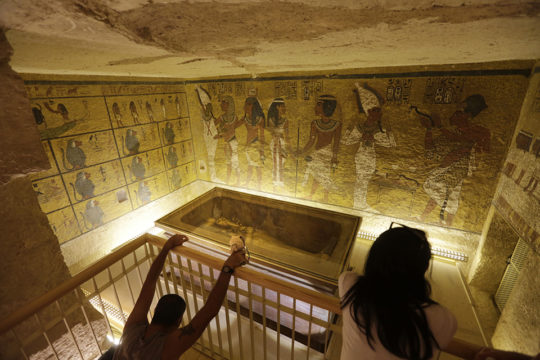Scientists have discovered that the iron dagger blade found in the sarcophagus of ancient Egyptian King Tutankhamun (14th Century BC) most likely originated from a meteor.

The meteoric dagger. (Meteoritics & Planetary Science)
In a paper published last month in the journal Meteoritics & Planetary Science the authors tested the blade using portable x-ray fluorescence spectrometry and found that it “strongly supports meteoritic origin.”
“Our study confirms that ancient Egyptians attributed great value to meteoritic iron for the production of precious objects,” the paper said.
Their findings comply with recent analysis of ancient iron artifacts from Gerzeh, an Egyptian cemetery on the west bank of the Nile.
“The sporadic use of iron has been reported in the Eastern Mediterranean area from the late Neolithic period to the Bronze Age. Despite the rare existence of smelted iron, it is generally assumed that early iron objects were produced from meteoritic iron,” the authors wrote.
The high-quality of Tutankhamun’s blade compared to other iron artifacts also found to be from meteorites shows “a significant mastery of ironworking in Tutankhamun’s time” the study said.
In related news, Egypt’s Minister of Antiquities Dr. Khaled El-Enany said earlier this month that his ministry will continue with its research and scans of Tutankhamen’s tomb, linked to a theory that secret burial chambers could be hidden behind its walls.
At a recent conference in Cairo dedicated to King Tutankhamun, archeologists clashed over the theory of the secret burial chambers.
Speaking at the conference, former antiquities minister and famed Egyptologist Dr. Zahi Hawas rejected the theory that the undiscovered area lies behind the Tutankhamun’s tomb and likely contains the tomb of Queen Nefertiti, one of pharaonic Egypt’s most famous figures.

The mummy of King Tutankhamun. Black and white picture of Tutankhamun mummy showing the iron dagger (34.2 cm long) placed on the right thigh (arrowed). (Griffith Institute, University of Oxford)
The theory, put forward last year by British Egyptologist Nicholas Reeves, has prompted the new exploration and the tomb has been extensively scanned by radar.

A 269-pound iron meteorite that came from more than 30 tons of meteorites found at the Barrington Meteor Crater in Arizona. It is 92 percent iron and 7 percent nickel. (Photo by Taty2007)
Story by CCTV America and the Associated Press.
[flagallery gid=169]
 CGTN America
CGTN America In this Thursday, Nov. 5, 2015 file photo, tourists look at the tomb of King Tut as it is displayed in a glass case at the Valley of the Kings in Luxor, Egypt. On Saturday, Nov. 28, 2015. (AP Photo/Amr Nabil, File)
In this Thursday, Nov. 5, 2015 file photo, tourists look at the tomb of King Tut as it is displayed in a glass case at the Valley of the Kings in Luxor, Egypt. On Saturday, Nov. 28, 2015. (AP Photo/Amr Nabil, File)
